
4 Oct, 2018
Blasts from the Past: Two historic speeches to cement the future of PATA
Langkawi, Malaysia — Backed by a disruption-free global and regional environment and commensurately steady rise in travel flows, the Pacific Asia Travel Association took positive steps forward at the PATA Travel Mart in Langkawi, Malaysia, between 12-16 Sept 2018. From an energetic Youth Symposium to a quality-not-quantity Travel Mart, high-profile Gold Awards ceremony to panoramic tours of the scenic Northern Malaysia island, the event provided widespread opportunities for business and leisure.
The four-year recovery process under CEO Mario Hardy is certainly lifting all boats. With the business of Building the Business well on track, finances restored and transparency-cum-good governance instituted, the Association is undertaking a sweeping overhaul of its internal governance structure and by-laws. Now comes the fourth and possibly the hardest part – predicting, preparing, preventing and perhaps pre-empting the looming geopolitical, economic and environmental storms. Indeed, PATA is at the same time inflection point it was exactly 20 years ago when it moved its HQ from the United States to Asia to take advantage of the emerging Asian Century — and then squandered the advantage. There were plenty of warning signs during the PTM 2018 that a déjà vu scenario is not too far away.
Here is a three-part analysis of the PTM 2018:
PART ONE – THE FUTURE OF TOURISM TO MALAYSIA AND THE PTM
Just like PATA itself, host country Malaysia is also at an inflection point.
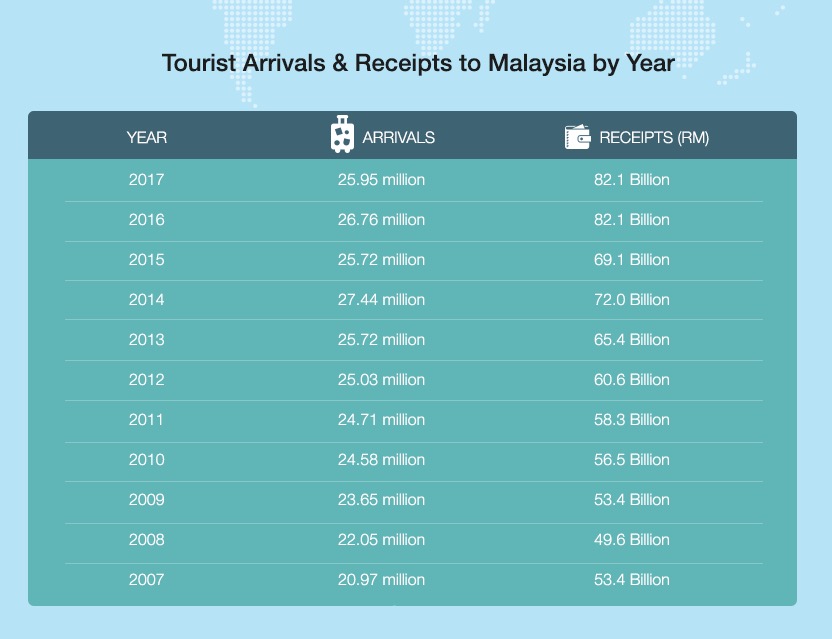
Source: Tourism Malaysia
Tourism arrivals have been virtually stagnant since 2010, worsened by the 2014 disasters involving two Malaysia Airlines aircraft, just five months apart. The financially struggling airline cut back on numerous routes, especially to Europe. This had a ripple-effect impact on Tourism Malaysia which has closed some of its offices, and is reportedly set to shut down more. In 2017, Malaysia recorded 25.9 million arrivals with 82.1 billion ringgit in receipts. The target for 2018 has been lowered to a more realistic 30 million visitors as against the original target of 35 million. The following table of 2017 arrivals to Malaysia from some key source-markets against those of Thailand shows how badly Malaysia has been hit.
| Visitor arrivals to Malaysia and Thailand from key source markets 2017 |
||
| Malaysia | Thailand | |
| FROM | ||
| China | 2.28 million | 9.8 million |
| India | 552,739 | 1.19 million |
| Korea | 484,528 | 1.69 million |
| Japan | 392,777 | 1.52 million |
| Russia | 67,564 | 1.34 million |
| Sources: Tourism Malaysia, Tourism Authority of Thailand | ||
Since 1972, PATA has held six annual conference and/or travel marts in Malaysia. Clearly hoping that the 41st edition of the PTM will be a catalyst for a broader tourism revival, the Malaysians turned out in strength. Led by the Langkawi trade, the 67-strong Malaysian contingent included a solid presence by Sabah, Sarawak, Labuan, Selangor, Penang, Kedah and Johor. Following all the textbook procedures, Tourism Malaysia is expanding partnership arrangements with international airlines, European travel agents and tour operators and has signed up as the official partner country for ITB Berlin 2019.
Advertising and promotion via digital marketing platforms are being stepped up to reach an increasingly social media-driven customer base. Visa processes are being improved for Chinese and Indians with other source-markets to be added in future. To tap the enormous cruise potential along Malaysian ports and resorts, links are being strengthened with Thomson Cruises and TUI Discovery Cruises. The giant German tour operator TUI is also set to open an office in Malaysia. All this will be necessary to generate the numbers to fill Malaysian hotel inventory which grew 8.5% in 2017, with 250 new hotels. More hotels are in the pipeline, as indicated by the following report from HVS Research.
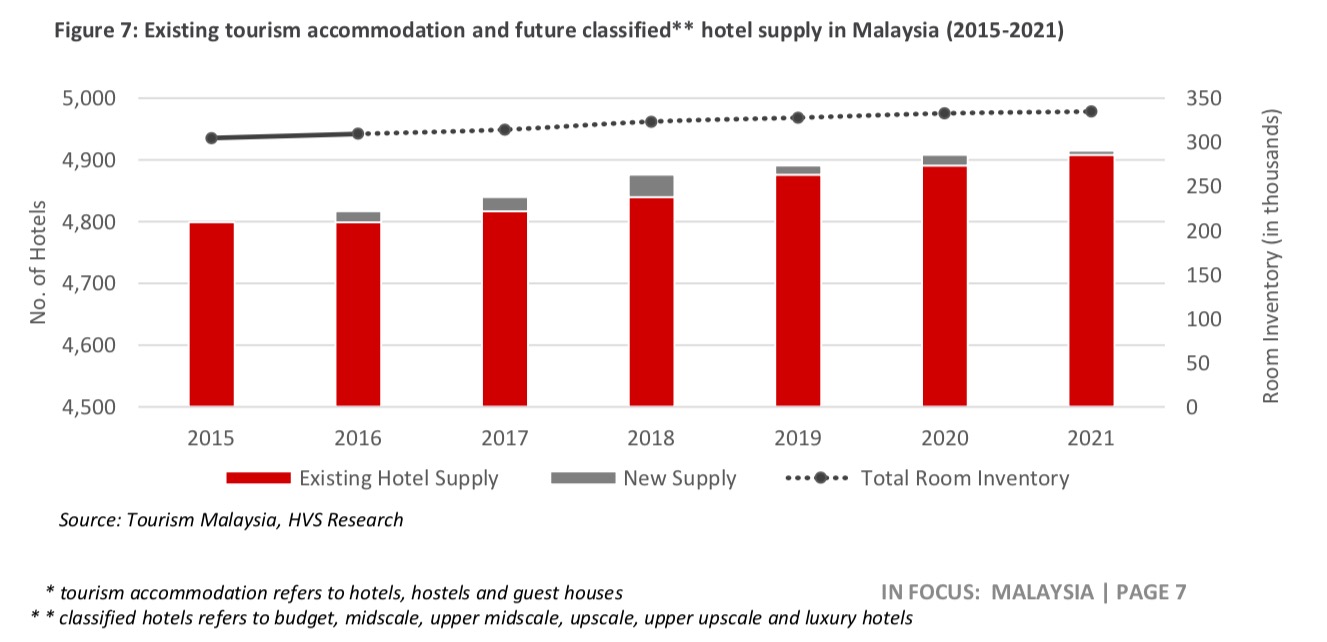
However, tourism to Malaysia will depend not on marketing campaigns but internal peace and stability following the stunning results of the May 2018 national elections. The PTM 2018 saw a show of unity by two former political foes, Datuk Seri Mukhriz Mahathir, son of Prime Minister Mahathir Mohammed, and Deputy Prime Minister Dato’ Seri Wan Azizah Wan Ismail, wife of political leader Anwar Ibrahim, who shared the stage at the opening ceremony to pitch Malaysia’s tourism potential. Four days later, on 16 Sept, the country marked Malaysia Day with even more rah-rah cheering about its future following the return of Dr Mahathir and his patch-up with the man he once had jailed. However, several private sector Malaysians said the ousted cronies of the former Najib government will not yield easily. The high-stakes political game is still afoot, and any tension that destabilises the country will hurt tourism for sure.
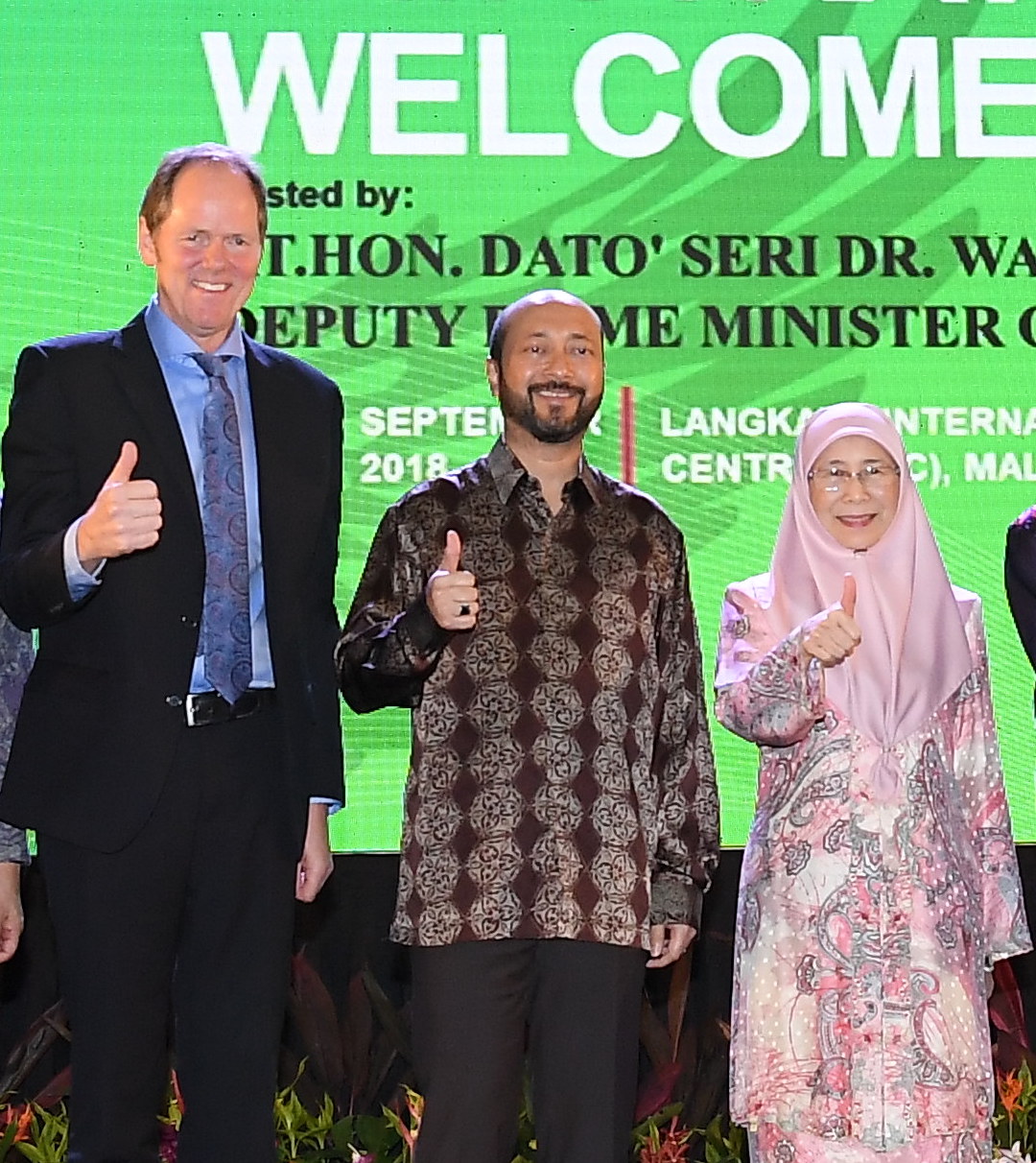
PATA Chairperson Prof Chris Bottrill, Datuk Seri Mukhriz Mahathir and Dato’ Seri Wan Azizah Wan Ismail at the PTM 2018 opening ceremony.
Although the total delegate count was higher than the 2017 PTM in Macao, largely because Malaysia had more domestic participants, the actual number of buyers and sellers was lower than in Macao. A detailed check of the buyer-seller directory showed a whopping number of first-time buyers (101) and sellers (91). Mr Hardy said PATA was pursuing a better balance between quality and quantity. He said the industry abounds with travel marts. Rather than try to chase an unrealistic number count, it was better to “consistently innovate” to help buyers and sellers get value for their time and money.
| Langkawi 2018 | Macao 2017 | |
| Total delegates | 1,400 from 70 destinations | 1,131 from 66 destinations |
| Sellers | 389 from 208 organisations and 33 destinations | 462 from 252 organisations and 37 destinations |
| Buyers | 252 from 241 organisations and 53 source markets | 293 from 282 organisations and 51 source markets |
| Source: PATA media releases | ||
Overall, the Langkawi Mart and its side-activities met the key Building-the-Business objectives. In addition to the staple beauty contest of techno start-ups seeking to catch the eye of investors and the annual Gold Awards sponsored by Macao Government Tourism Office, the event featured a line-up of special PTM talks on industry products and trends. One talk highlighted the important role of Langkawi as the first UNESCO Geopark in Southeast Asia. More industry data was shared at an Insights Lounge by Oxford Economics and MasterCard.
The business component of the PTM 2018 is chugging along nicely. No doubt it will be impacted in future by technology, costs, the lure of the host destination and the ferocious competition worldwide. But as of now, that ship has been steadied.
PART TWO – THE FUTURE OF PATA
The PTM was followed by two days of PATA chapters, council, committee, Foundation and Board meetings in which a key underlying theme was the future of PATA in the context of the forces of change. Here, the jury is out. Between them, Mr. Hardy and PATA Chairperson Prof Chris Bottrill, Dean of Fine and Applied Arts, and Director, International, repeated the same nomenclature heard in PATA meetings for decades: Value Proposition, Membership, Relevance, Partnerships, Advocacy, Efficiency, Sustainability, Responsibility, Productivity, Research, Marketing, Insights, etc., etc. Prof Bottrill said one of the most important current activities is a revamping of all the internal structures, by-laws and corporate governance, including the raison d’etre of the various committees and councils.
Having covered PATA’s ups and downs since 1981 as well as a full PATA member, I will contribute to that process by citing two key speeches made soon after PATA moved from San Francisco to Bangkok in 1998, exactly 20 years ago. One is by Mr. Joe McInerney, an American, the PATA CEO who oversaw the move, at the PATA Annual Conference in Nagoya in 1999. The other is by Dr Karan Singh, an eminent Indian politician and former Tourism Minister, at the PATA Annual Conference in Hong Kong in 2000. Mr McInerney talked about the future of PATA in Asia. Dr Singh talked about the future of Asia in the 21st century.
| Click on the images to download the full texts of their respective speeches | |
The two landmark speeches comprise a rich checklist to assess PATA’s track record since 1998 and also guide the ongoing reformasi process. As the region’s pre-eminent travel industry historian, I meticulously preserved both speeches, and many more, well aware of their future historic value. They make clear why PATA went into a tailspin. An association that changed its name from Pacific Area Travel Association to Pacific Asia Travel Association and then moved to Asia lost sight of the fact that it’s own future is intrinsically linked to the future of Asia. When Asia suffers or prospers, so does PATA. With both the symptoms and the sickness incorrectly diagnosed, it was but natural that the prescribed remedies would also be incorrect.
One of the most near-fatal “remedies” was the decimation of the chapters. In his 1999 speech Mr. McInerney had highlighted the importance of the chapters thus: “One of the more daunting challenges PATA faces are the many issues and questions surrounding the PATA Chapters, especially in terms of their relationship to the Association. The Chapters play a very significant role in PATA, although they serve different functions in different areas of the world. Before any definitive recommendations are made, we will conduct a thorough analysis of the Chapters, and we will be seeking constructive input from Chapter leaders.”
The “thorough analysis” and “constructive input” produced a garbage-in garbage-out decision which nearly wiped out the chapters, shrivelling PATA to the point of near extinction. Today, PATA leaders are again singing the praises of the chapters. What they inherently fail to do is to admit: “That was a huge mistake. What can we learn from it?”
Prof Bottrill told the sparsely-attended Chapters Colloquium in Langkawi that the current network of 36 chapters gives PATA strength in numbers and an opportunity to connect and share globally. He said he could personally attest to the importance of chapters because his own doctorate thesis was on network development and how clusters perform and contribute to growth by creating formal and informal connections from which knowledge emerges. He referred to the chapters as “a unique knowledge base” that could be harnessed in multiple ways. Meanwhile, he noted that PATA was growing the number of student chapters at various universities in order to get the future generation plugged into the PATA system.
In turn, Mr. Hardy referred to the chapters as a “family” and “ambassadors of PATA”, which reflect the original founding of PATA as a public-private sector partnership. He said that the erstwhile lack of communication between and amongst the chapters and Head Office was giving way to a lot more engagement and activities. Staff changes were being made to accommodate these changes at the head office.
Two clear examples flagged the networking, knowledge-sharing and business-building role of the chapters.
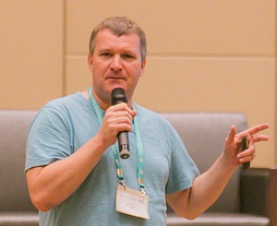 Mr Christopher Crampton |
Mr. Christopher Crampton, chairman of the UK chapter, minced no words in saying that PATA is still considered a “slightly frayed” organisation that was once known as an “old boys club”. However, it still has a brand value. The UK chapter strives to piggyback on the brand value to help PATA’s NTO member promote travel from the UK to the PATA region. He said the chapter membership includes people “who will never be global members nor will they ever see anyone from head office.” Hence, events organised by the UK Chapter are not to promote the PATA brand but to give participants value for their time and money. The events are “relevant and fun,” devoid of formal dinners and boring speeches. The Chapter sets up the networking and then “gets the hell out of the way. We just let the industry get on with its job. It’s not about us. We just have the (PATA) brand up there. After that, it’s about everybody else.” Referring to the chapters as “the eyes and ears of PATA” he said the HQ would need to hire 1,000 staff to do the same thing by itself across all its chapters.
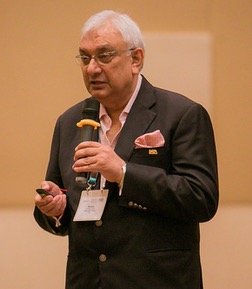 Mr Runeep Sangha |
Another value-proposition event came from the PATA India chapter. The Indian tourism industry is facing image problems related to safety concerns for women. Mr. Runeep Sangha, Executive Director of the India chapter, said that for the first time, an event was organised with the foreign correspondents corps in New Delhi to initiate a dialogue. It proved to be useful and constructive. PATA’s home base of Bangkok also hosts one of the largest foreign correspondents clubs in Asia. This editor is a Life Member of the Thailand club which holds several well-attended events a week on topics pertinent to Asia at large. For the record, PATA has never held an event at the FCCT in spite of me suggesting it several times to past CEOs, and in spite of the clubhouse being located less than one kilometer from the PATA HQ in Bangkok.
If decimating the chapters was a mistake, Dr Karan Singh’s speech highlights PATA’s other big mistake: Ignoring Dr Singh’s agenda-building guidance on the future of Asia. For Asia to rise, Dr Singh said in his speech, “the Asian countries will need to get their own act together, strengthen democracy and peoples participation, move towards empowerment of women, overcome deep rooted internal animosities and adopt a much more co-operative attitude inter se within this great continent.” Outlining a vision long before the UN Sustainable Development Goals came along, he added, “We will need all our wisdom to deal creatively with the globalization phenomenon, so that the positive aspects are strengthened and the negative kept under control. This is the real challenge of the 21st century, specially for Asia whose history and culture stretch far back into the remote dawns of human civilisation.”
Inspired by Dr Singh’s thought-leadership, this editor focussed on many of those core topics in my eight years as Editor and writer/researcher for PATA’s flagship publication “Issues and Trends”, all of which can be downloaded here. For the record, PATA never acted on Dr Singh’s vision. Nor did it build on the research and analysis contained in Issues and Trends to build an advocacy agenda of direct relevance to Asia.
This failure to look at the broader context of opportunities and challenges facing Asia was again obvious at the PTM 2018.
Langkawi lies at the north of the subregion known as the Indonesia-Malaysia-Thailand Growth Triangle, which covers Southern Thailand, Peninsula Malaysia and the Western coast of Indonesia. These great multi-cultural destinations, including Phuket and Penang, are equally as historic and picturesque as the Greater Mekong Subregion, but do not get even half the publicity. Accessible by road, rail, sea and air, they are also critical components of the socio-cultural agenda under the ASEAN integration agenda. Thailand and Malaysia are keen to promote travel across their overland border-sharing provinces. In 2004, the area was one of the worst hit by the tsunami, especially the Aceh region. Today, the Tsunami Memorial in Aceh is one of the region’s most extraordinary attractions.
Yet, the PTM 2018 did not devote a single agenda item to the tourism potential of IMT-GT. Had that been done, PTM 2018 could have become a celebration of the entire subregion, well beyond just Langkawi and Malaysia. It would have attracted dozens of new sellers and exposed buyers to some eye-popping new destinations.
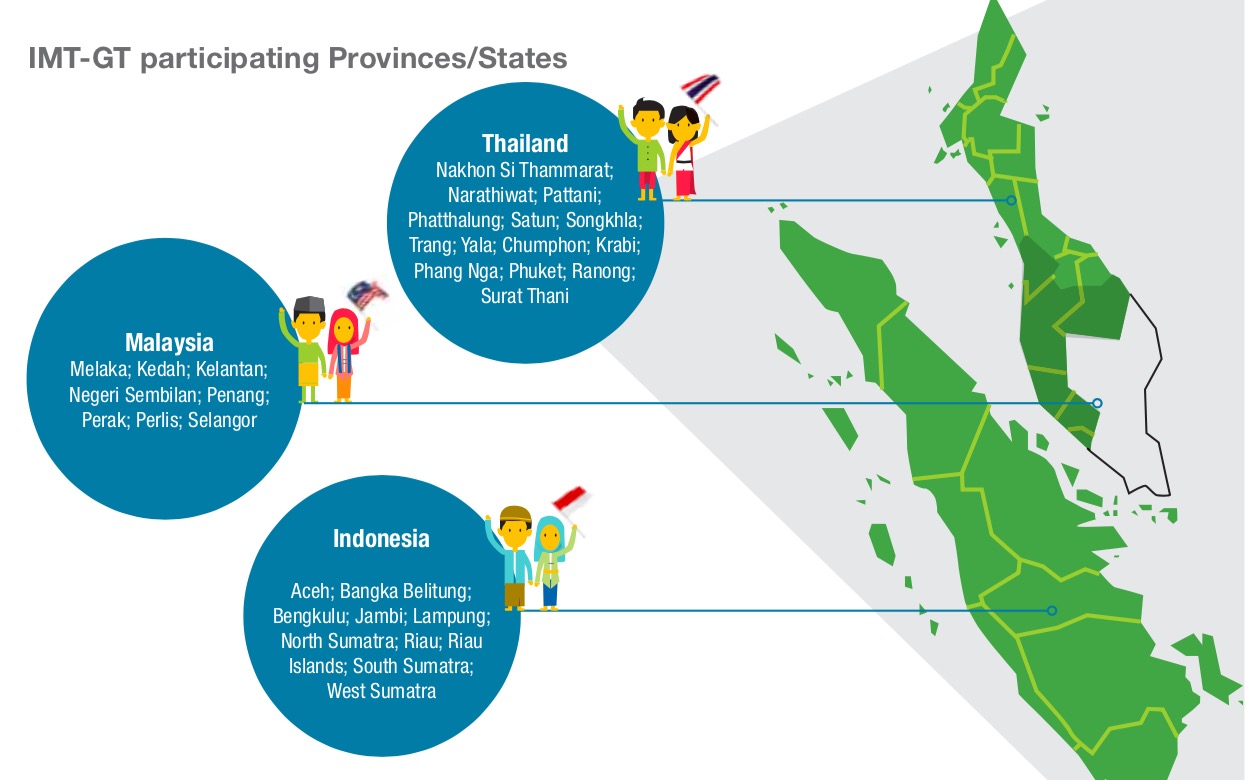
Other obvious gaps are waiting to be plugged.
The upper hierarchy of the Pacific Asia Travel Association is top-heavy with non-Asian males (with the sole exception of the Finance Director, a Thai male) while the lower rung is stacked with Asian females, mostly Thais. In its 61-year history, PATA has had only one Asian CEO. Since its move to Asia, indigenous Asians have been non-existent in senior management positions. The latest addition is the Chief of Staff Mr Trevor Weltman, a young American from Detroit. His job was not publicly advertised, so there is no way of knowing what other talent existed amongst Asia’s teeming millions who could have filled that post.
Mr. Hardy says Mr. Weltman is doing a great job streamlining the internal processes to enhance staff productivity and efficiency. In his inaugural briefing to the Board, Mr. Weltman astutely observed that “PATA has perhaps been doing too many things in the past without questioning them enough.” He was also assigned to ensure that all PATA communications were in compliance with the European GDPR. However, some of the new processes he is instituting are aligned with Google. That appears to be a contradiction in terms – strict compliance with GDPR but using the services of a media behemoth which has been fined for violating European anti-trust safeguards and faces many more questions about its own operations. No matter. The PATA board again did exactly what Mr. Weltman said it has done in the past – let it pass without question.
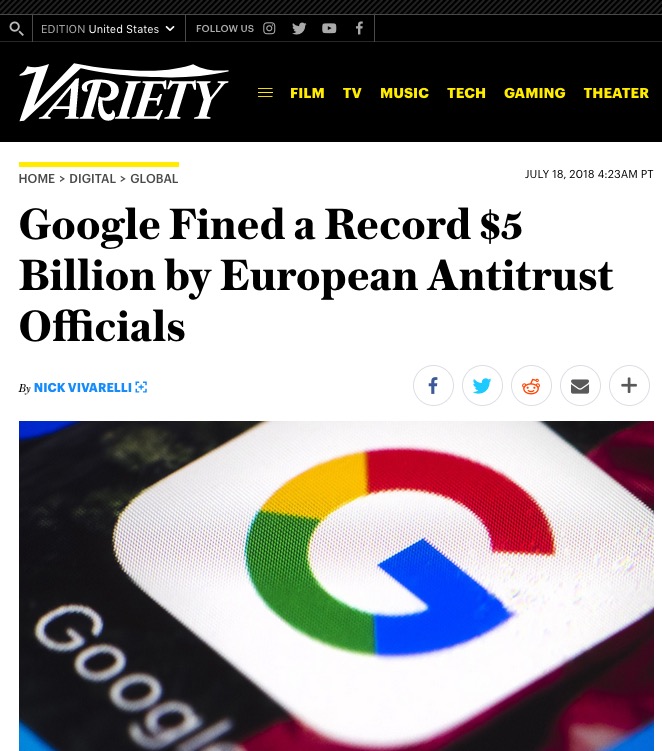
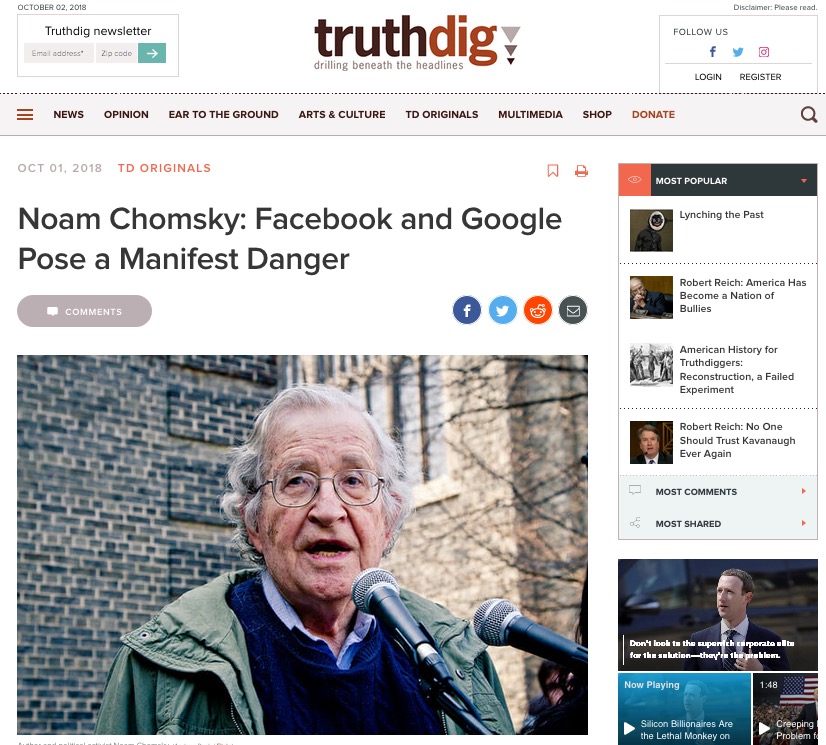
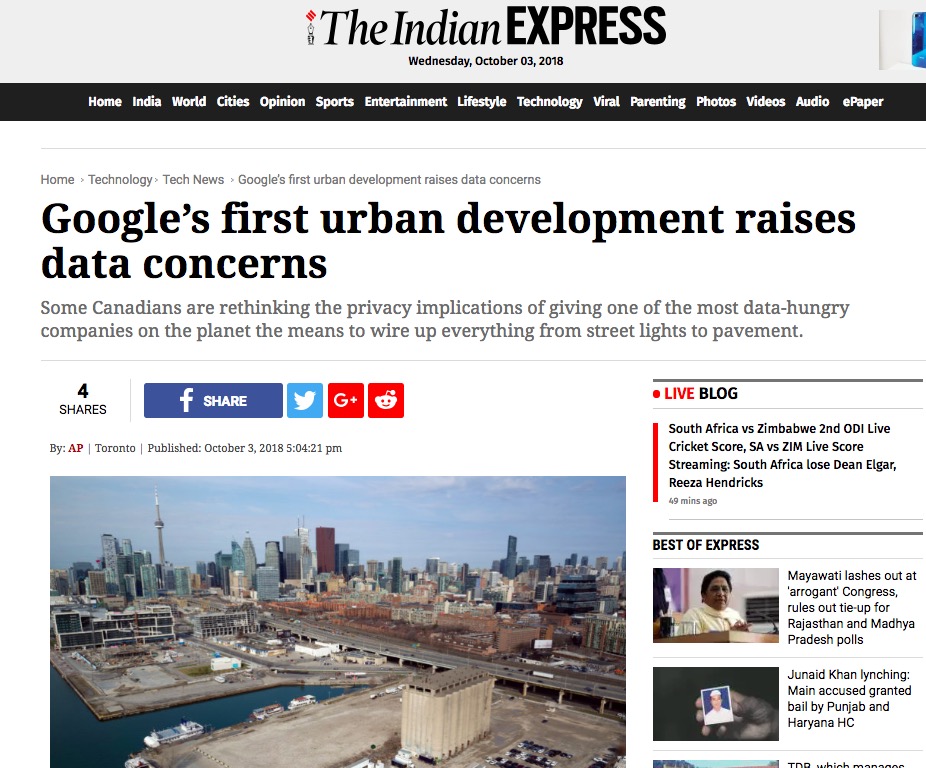
Therein lies another big mistake. The over-sized “board” has become just a rubber-stamp entity. Tired at the tail-end of the five-day event, board members are clearly keen to get back home. Nobody is bothered with the details. Everything is entrusted to the Executive Board. This flacid ending is in complete contrast to the way both the PTM and its sister flagship event, the PATA Annual Summit, begin — with an energetic Youth Symposium, full of life and interaction. Luckily for the board members, the students do not see the final fade-out. The media does bear witness, however, thanks to the transparency and accountability reinstated by Mr. Hardy.
PART THREE – CONCLUSIONS
Mr. Hardy says that one of the more high-demand PATA activities is a PATAcademy course on story-telling in which destinations learn to tell interesting stories about themselves. What PATA needs is a course in HIstory-telling, starting perhaps with its own story, warts and all.
The PTM 2018 was rife with pointers about how PATA can still refocus its To-Do agenda in accordance with the vision Dr Karan Singh so brilliantly articulated in 2000. Having privately made clear that he plans to step down at the end of his current term in 2020, Mr. Hardy needs to finish the job, all the more so because he knows he has nothing to lose. The over-arching goal should be to build the Asian Century. Malaysia itself is a perfect example of how a country’s tourism industry can suffer if both the external and internal operating environments are thrown out of kilter. Huge tourism marketing budgets and all the crisis management courses in the world then make no difference at all.
In September, almost right on top of the PTM 2018, East Asian destinations were hit by heavy-duty storms. In early September, Typhoon Jebi hit Japan, leading to the closure of Kansai airport for more than a week. A few days later, Super Typhoon Mangkhut hit Macao, Hong Kong and China. Both storms caused extensive damage and casualties. In one of the final comments at the Board meeting, a Japanese delegate said the storms were a reminder of the increasing ferocity of global weather, and the need to expedite sustainability actions to alleviate it.
The same advice could be applied to man-made storms. Against the backdrop of the PTM, a number of geopolitical and economic storms are also looming, such as the impact of the China-U.S. trade war, the idiocies of the “world’s most powerful man” elected by the American people, instability in the Middle East, as well as the socio-cultural threats posed by what I have termed “The Other Global Warming.” Dr Karan Singh had accurately warned PATA delegates about such threats. He had also urged PATA delegates to think a little deeper about the real riches of Asia, thus:
“In our obsession, with tourist arrivals and airline fares, hotel accommodation and package tours, gross national products and rates of economic growth, let us never forget that the ultimate purpose of human life lies in the quest for enlightenment and higher consciousness. Life is not a mechanical journey from the womb to the tomb, but a unique opportunity for spiritual growth and an exciting adventure in consciousness across what the Upanishads call the razor-edged path leading to the Great Being who shines in glory with the light of a thousand suns. This is the deeper message of Asia to world civilisation.”
This year will complete 20 years of PATA’s move to Asia. During this period, it made many mistakes, but still lives in denial about them. Many of the PATA old-generation decision-makers responsible for those mistakes will have faded from the scene by the time PATA turns 70 in 2021. A new generation will have emerged, facing an entire new set of challenges that may well transcend the traditional and excessively invoked technobabble solutions. The PATA mission statement about “acting as a catalyst for the responsible development of travel and tourism to, from and within the Asia Pacific region” may no soon be invalid. In fact, it still remains true that if PATA were to be shut down today, it would make absolutely no difference to the unstoppable flows of travel & tourism to, from and within region.
In my private conversations with Mr. Hardy, I have congratulated him on steadying the PATA ship, but told him that it has only been possible because of what appears to be a temporary lull in stormy weather, especially those in PATA’s own backyard in Bangkok. PATA’s fortunes are only as good as the velocity of the next storm. I was not telling him anything he doesn’t already know. In his remaining two years, he may chose to adopt Mr. McInerney’s path, or Dr Singh’s.
More importantly, which path will the PATA membership at large opt for?





Liked this article? Share it!